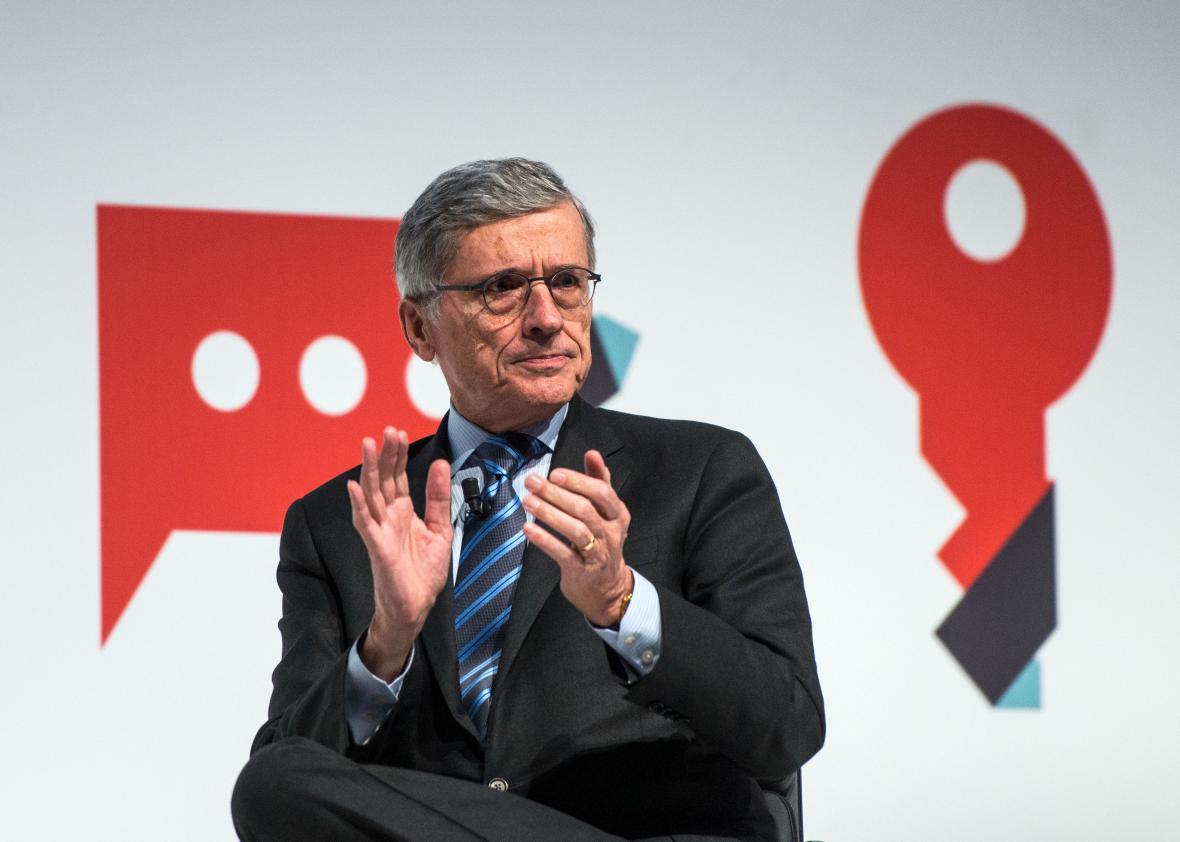News about building 5G wireless broadband in the United States has been ramping up for months. Both AT&T and Verizon have promised to offer customers these ultra-fast networks within a few years, and now the Federal Communications Commission is setting the stage.
It’s still unclear what 5G will really deliver at scale. Verizon’s early 5G testing is promising gigabit speeds, and CNET reporter Roger Cheng watched Verizon produce a 3.77 gigabits-per-second download in a demo. In general, the vague range people talk about is a 10 to 100 times speed improvement over 4G. Any improvement would be useful, but that order of magnitude makes all the difference.
On Monday, FCC Chairman Tom Wheeler announced that the agency will vote in July on a proposal called Spectrum Frontiers that would open up new portions of the radio spectrum to 5G. He explained in a speech that the FCC plans to make high-frequency bands available on the radio spectrum for 5G. (Refresh your memory of how the radio spectrum is allocated here.) “Current blocks of licensed low-band spectrum are usually 5 to 10 MHz in width. With 5G, however, we are looking at blocks of at least 200 MHz in width. This will allow networks to carry much more traffic per user,” Wheeler said. “Opening up spectrum and offering flexibility to operators and innovators is the most important thing we can do to enable the 5G revolution.”
Telecom lobbying groups agree. The CTIA Wireless Association published an extensive report last week encouraging the FCC to open up high-band spectrum for 5G. And individual companies that are invested in 5G technology are happy, too. “Qualcomm strongly supports FCC Chairman Tom Wheeler’s 5G initiative,” senior vice president Dean Brenner told Broadcasting and Cable. “Qualcomm has been developing the building blocks for 5G for years. … While 3G and 4G connected people, 5G will connect everything.”
This is the larger promise of 5G that everyone is touting. With lower latency and faster speeds, the Internet of Things could not only be continuously connected, but could be processing and sharing an almost unimaginable amount of data in very small amounts of time. This would be especially useful for things like medical devices and self-driving cars where speedy algorithmic decision-making and implementation can avert catastrophe.
Crucially, a lot of fundamental 5G technology is still not in place, though. As my colleague Will Oremus wrote on Slate in February, “The industry has yet to agree on the metrics that will define 5G, a standards-setting process that is expected to take until 2018.” Four months later, that is still the status of things. Wheeler said in his Monday speech that the FCC “won’t wait for the standards to be first developed in the sometimes arduous standards-setting process or in a government-led activity. Instead, we will make ample spectrum available and then rely on a private sector-led process.”
5G holds enormous promise, not just for faster browsing on your smartphone but as potential competition for the gridlocked high-speed broadband market, which is currently rigged by cable companies with natural monopolies in too many U.S. regions. For 5G to bring change, though, it has to first exist as a working technology. As Wheeler said on Monday, “If anyone tells you they know the details of what 5G will deliver, walk the other way.”
